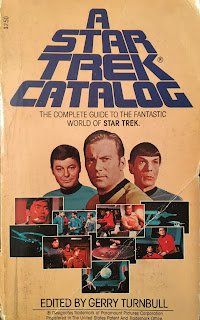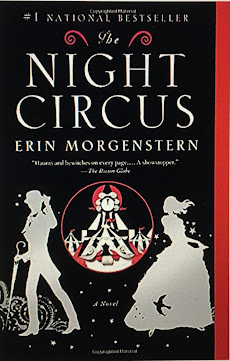Star Trek Turns 55 on September 8
Special Book review of The Star Trek Catalog, Gerry Turnbull, editor, and a look back at the ever expanding Star Trek Universe
by Theresa Gauthier
This year, the Star Trek franchise turns 55, so I thought a look back at what it’s achieved would be a good idea. I’m going to post at least one Trek-related post each month until the franchise turns 56. To kick things off, I’ve decided to review my all-time favorite Star Trek book. More than any other Star Trek book I have, I treasure this one.
Written in 1979, when Star Trek was newly restored to its former glory—okay, maybe not, but it was the year Star Trek burst onto movie screens for the first time.
I can’t recall how I got the book. I don’t remember seeing it in a book store, and I have a vivid memory of finding other Trek books. It may be that I ordered it from school. We did book orders every once in a while then. There weren’t Scholastic Book FAIRS. We ordered the book from order sheets, the teachers collected the money and the titles and a few weeks later, we had our books.
Star Trek was in syndication back in ’79 when this book was released. The episodes ran in some areas as many as 7 days a week. Where I lived, we were treated to it five days a week. It took the sting out of Mondays knowing that I’d be able to watch Star Trek every day of the new week.
The book is a sort of history of Star Trek combined with an episode guide and including addresses for fan clubs, lists of organizations, and ways for fans to get in touch with each other. It starts with a short discussion of the “Star Trek Phenomenon”—how the show aired for two seasons and was saved with a letter writing campaign for a third season.
Following that is an interview with Gene Roddenberry written out in script format. Roddenberry discusses how he came up with the concept for the show, how it was the forerunner for films and TV shows like Star Wars, Close Encounters of the Third Kind and Battlestar Galactica. He talks about the fans, the production and more. It’s a short interview, but well done.
The book touches on the conventions or cons next. This section really got to me when I was a child. I’d had no idea that such events happened and I dreamed about being able to go. For the record, those of you who only ever attended a convention in this century really missed out. The ones held in the ‘80s and ‘90s were infinitely better. Less of a strain on the wallet and much more of a family, camaraderie feel to them. I can only imagine how great the ones in the ‘70s must have been. With fandoms and conventions still finding their feet as far as how to celebrate the things they loved, there must have been some amazing moments back then.
Following up from conventions are the rundown of fan groups. Clubs and organizations are listed broken down by state for the US, but organizations from other countries are included as well.
The best part starts next with a look at the crew. There’s a short bio of each actor including a list of other roles
they’ve played, birthdate, birthplace, etc. There are pictures of each of the seven main characters
For such a small book, the episode guide is in-depth. Each page contains only one full episode and part of the next. This is not a sentence or two and a photo and move on to the next episode. Instead, you get a satisfying run down of the episodes in broadcast order including airdate, guest star names, and interesting facts and trivia.
The book was important to me like few other books. I carried it around with me. I studied it, read it, reread it, memorized it, and wondered if I should try to join a club in my state or if one of the California ones would be better given that they were closer to Hollywood.
All these years later, the world of Star Trek has enjoyed a sort of renaissance emerging from its own ashes even better than before. While TOS (Star Trek: The Original Series) and TNG or Next Gen (Star Trek: The Next Generation) will always seem to be the most popular, DS9 (Star Trek: Deep Space Nine) will always have a special place in my heart. DS9 seemed far more futuristic in a lot of ways. With a black captain, a major character that was a dual character with a humanoid and symbiont side—and so could and did change gender, age, height, color, weight, background with each new host—and the first serious look at a religion in the Star Trek universe (Bajor’s Prophets), it’s Deep Space Nine that truly embraced a more faceted, complete look at life in the 24th century—in Starfleet and, for the first time in a Star Trek show, outside of Starfleet, while Enterprise gave us a look back at the beginning starting in the years after first contact with the Vulcans and covering the launch of Earth’s first interstellar ship.
Even in the years between the end of Enterprise and the beginning of Discovery, the show managed to find a new audience. The refurbishment of the Original Series so that the show could air on today’s HD screens is one reason. Now, Discovery, Lower Decks, Picard, and soon Prodigy, will give us even more. With Star Trek, it seems that once it starts broadcasting, people find it and latch onto it. With hundreds of hours of films, TV episodes, and documentaries to view—and hundreds of books to read—the Star Trek Universe is alive and well and still getting us through the tough times.
May the Prophets be praised.







Comments
Post a Comment